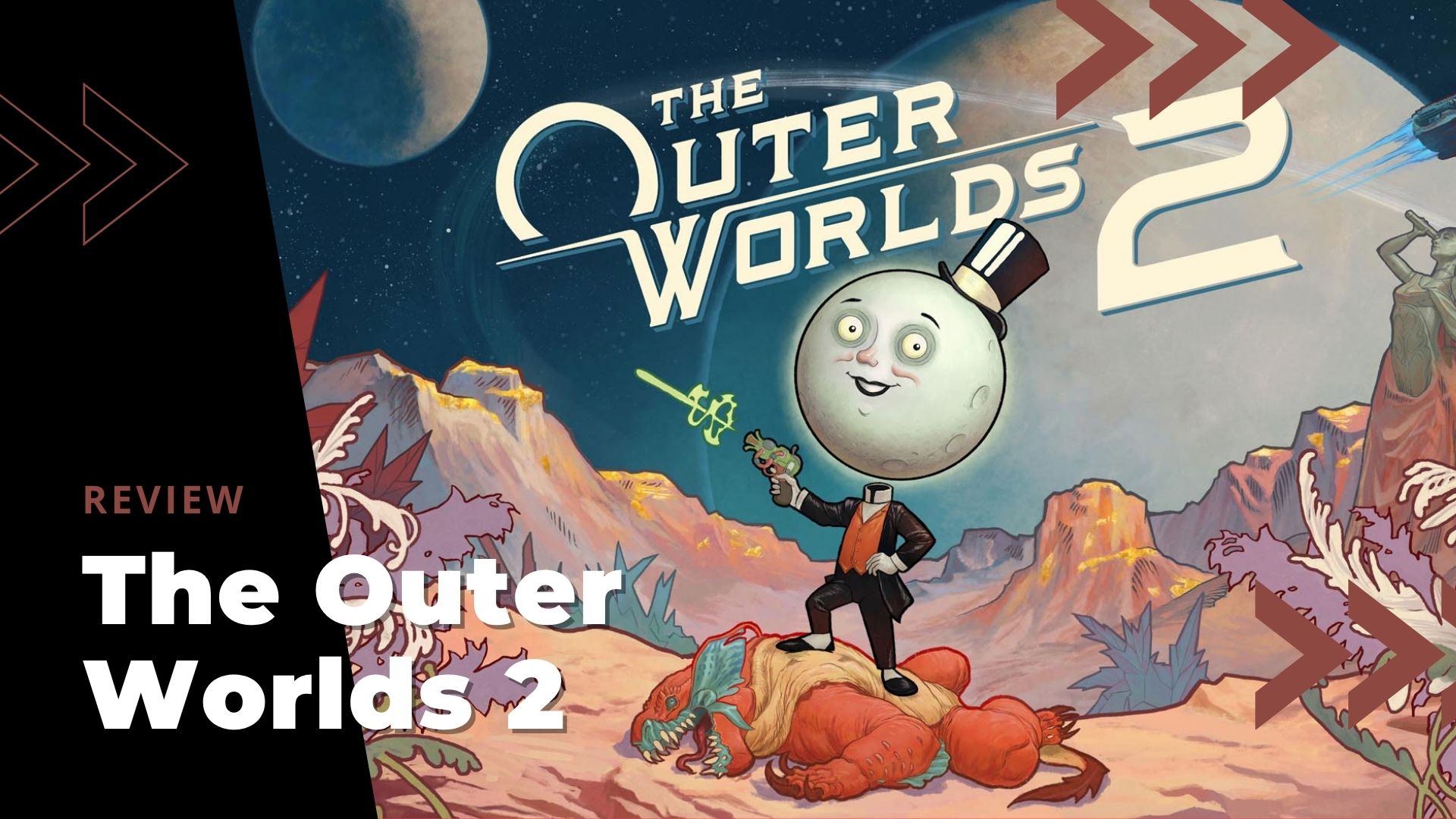This might be the hardest review I’ve ever had to write. I only started to enjoy the game towards the very end, and I’m still not sure if it was genuine or just a case of Stockholm syndrome.
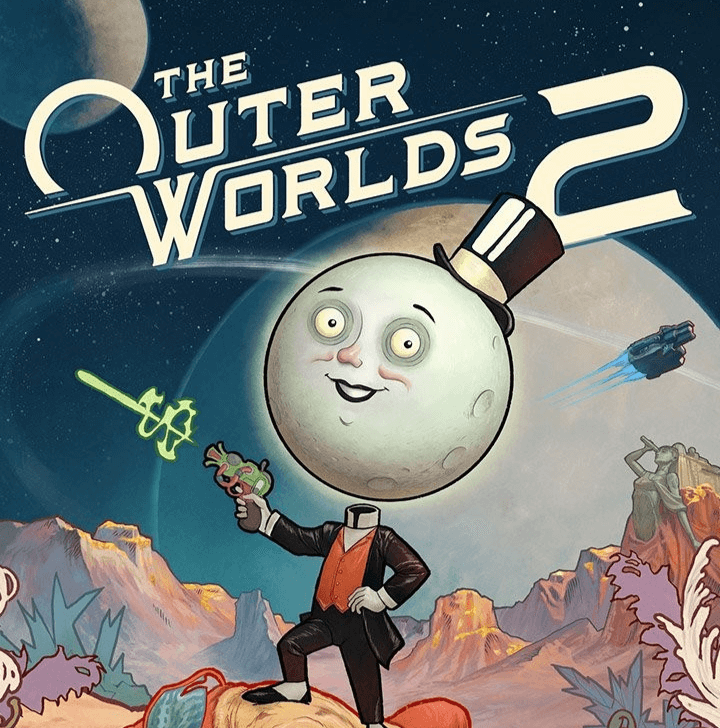
Let’s hop in a time machine. The year is 2015. If we released this game then, no one would have said, “Wow, this must be from the future.” In fact, it would have been criticized for being behind the standards of its time. Let’s go back even further. 2005. Even then, it would have felt archaic. The years go by, but Obsidian’s commitment to making antique-feeling games remains unshaken. The Outer Worlds 2 proudly carries this torch.
Old, Ancient, and Obsolete
Obsidian is a studio with a distinct identity, one of the first names that comes to mind when you think of RPGs. Fallout New Vegas, KOTOR 2, and more. Yet, there’s virtually no difference in technical quality between those legendary titles and the games they release today. If you’re going to release a game in 2025 with gameplay this dated and clunky, you’d better be pushing the boundaries of story and RPG mechanics. I’m not saying the RPG elements are bad, but they are absolutely not enough to save a full-priced game where the act of playing feels this poor. A balance is needed. If the gameplay is this abysmal, something else has to shine. This game doesn’t. It’s a standard RPG. In a few months—heck, in a few weeks—the only thing I’ll remember about this game is what a chore it was to play.
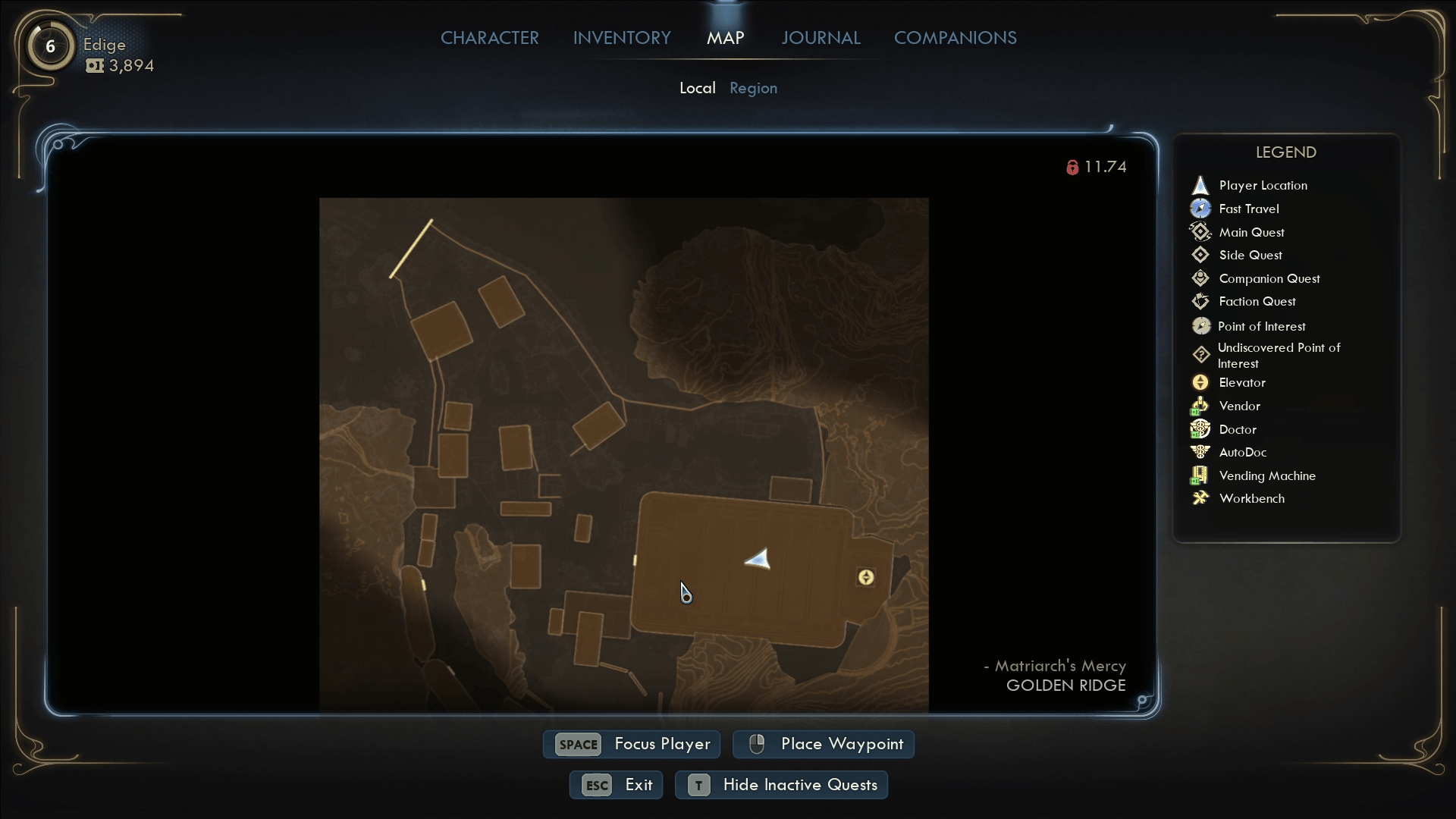
You’ve probably gathered that I don’t have the best relationship with Obsidian RPGs. If you’re a fan, my criticisms will likely sound like empty noise. While I love RPGs, Obsidian’s particular brand has never clicked with me, and The Outer Worlds 2 has done nothing to change that. Avowed, another Obsidian title from earlier this year, was a massive disappointment for me; the only similarity between its announcement and the final product was the name. I went into The Outer Worlds 2 knowing what to expect, so my expectations were rock bottom. Yet, the game still managed to surprise me. Releasing something this primitive, this archaic, in this day and age is quite an achievement. Didn’t anyone at the studio stop and ask, “What are we even doing?”
I’m astonished by Obsidian’s stubborn refusal to evolve its formula. You’d think a studio would accidentally improve its games over time, but they seem stuck in place. To sell games like this, you need phenomenal writing, but that’s missing too. The void left by the departure of talents like Chris Avellone has never been filled. A great RPG needs a great story, and the narrative in The Outer Worlds 2 simply lacks that impact.
Welcome to the Outer Worlds
The world of The Outer Worlds can be roughly described as Fallout in space. You land on various planets, each with small settlements that barely qualify as towns. You land, and you live out your own experience… or so they say.
For me, the worlds and characters in Obsidian games feel incredibly artificial. Game development is an act of illusion; you have to make the player believe in the world. But that magic never happens in Obsidian’s games. Everything feels fake. It’s painfully obvious that the “random” event that just happened to you was anything but.
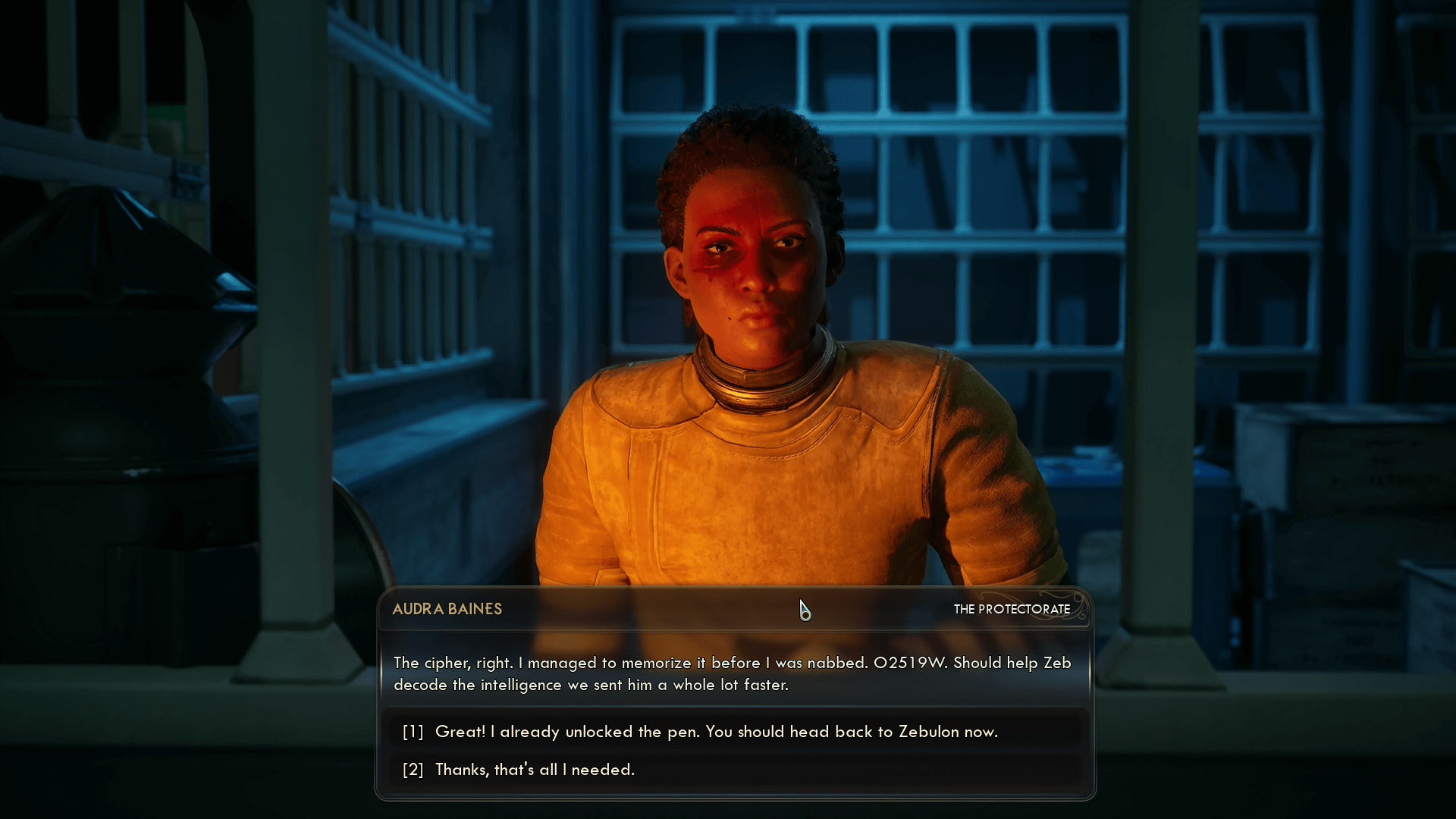
When that’s the case, you never become invested. The characters’ problems don’t become your problems, and the world’s conflicts don’t become your conflicts. At that point, there’s no reason to play an RPG.
I was hopeful at the start. The game begins on a spaceship. Instead of taking the stairs to the lower deck, I jumped down. My companion quipped, “Well, that was faster.” It’s these small interactions that pull you into a world. Unfortunately, the game didn’t follow through on that promise.
Gameplay? More Like Game-Pain.
Let’s be blunt: this game’s core gameplay is nonexistent. I’m not sure a team of four high school students could make something this clunky. The gunplay, animations, impact feedback—everything about the moment-to-moment action is just plain bad.
There’s a wide variety of weapons, and I genuinely love their visual designs. However, without exception, they all feel terrible to use. They have different attack types, but the clunkiness persists. I ended up using melee weapons for most of my playthrough, simply because they were slightly more satisfying. I can’t say they’re good, but I’d take them over the firearms any day.

You can upgrade your weapons with mods, but I didn’t bother much with the system. Back to the gunplay, the bullets feel like they’re from Counter-Strike 2—you never know where they’re going. It’s hard to control and even harder to tell if you’ve hit your target. It’s only a few steps above Fallout New Vegas’s gunplay, which is not a compliment.
Stealth is as basic as it gets, offering little more than distracting enemies and performing takedowns from behind. You can unlock a few extra perks, but they’re mostly passive buffs like quieter footsteps or faster crouch-walking. I will say, however, that the level design often provides a stealthy option. If you explore a bit, you can usually find a vent or alternate route to bypass enemies.
At times, the map design is an absolute mess. Finding your way can become a genuine ordeal, possessing the same cryptic nature as games from decades past. As I’ve said, the whole game feels dated, as if Obsidian made it 15 years ago and just remembered to release it. It’s like id Software re-releasing the original Doom today without any changes. They’d be crucified, and rightfully so. Yet, strangely, the gaming press seems to give Obsidian a pass. I suspect this is partly because many critics are older and grew up with these kinds of games. As for the players? The sentiment seems generally positive, but almost no one has played it. While the first game came to Steam a year after its Epic Games Store exclusivity, this sequel launched directly on Steam but failed to surpass the original’s player count. Obsidian’s core audience seems to like it. If you’ve enjoyed their previous games, you’ll most likely enjoy this one too.
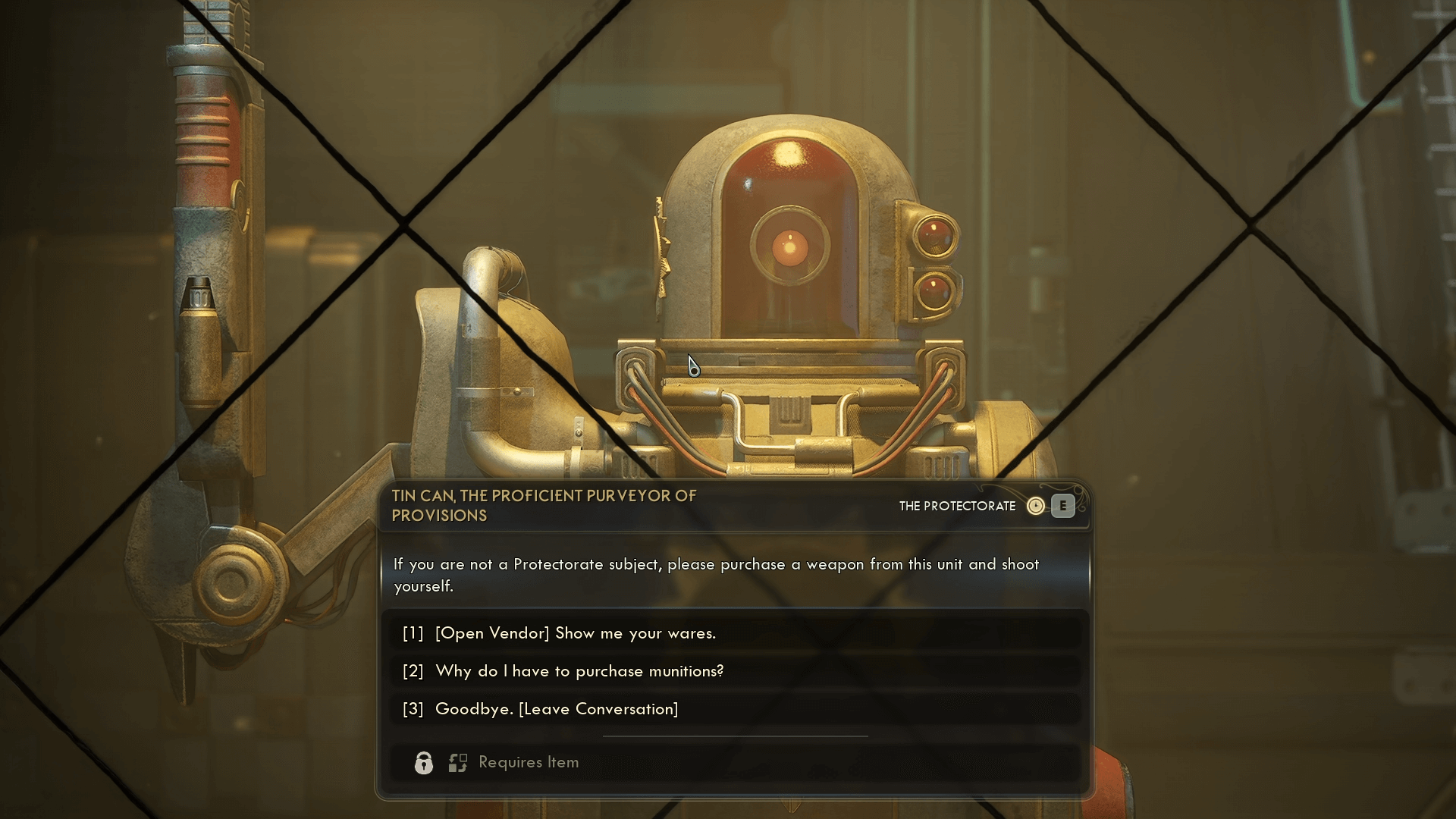
Now, for Obsidian’s trademark: the RPG elements. For me, an RPG is more than just character builds; it’s about the story and your impact on it. The Outer Worlds 2’s story failed to grab me at first. It got a little interesting later on, but it never really landed. But before we get to the story, let’s talk mechanics.
From character skills to the Flaw system, I did enjoy the RPG mechanics. At the start, you create a background for your character. If you pick more background traits, the game asks you to choose a flaw to balance it. These flaws can sometimes work to your advantage. For instance, I was trying to enter a refugee camp and had a “Sickly” flaw. I told the guards I was sick, and they let me in without any questions. You can also acquire flaws dynamically through gameplay. For example, I “borrowed” a lot of items, and the game offered me the “Kleptomaniac” flaw. When the game detects a pattern, a notification pops up, and you can choose to accept the flaw, permanently gaining its pros and cons.
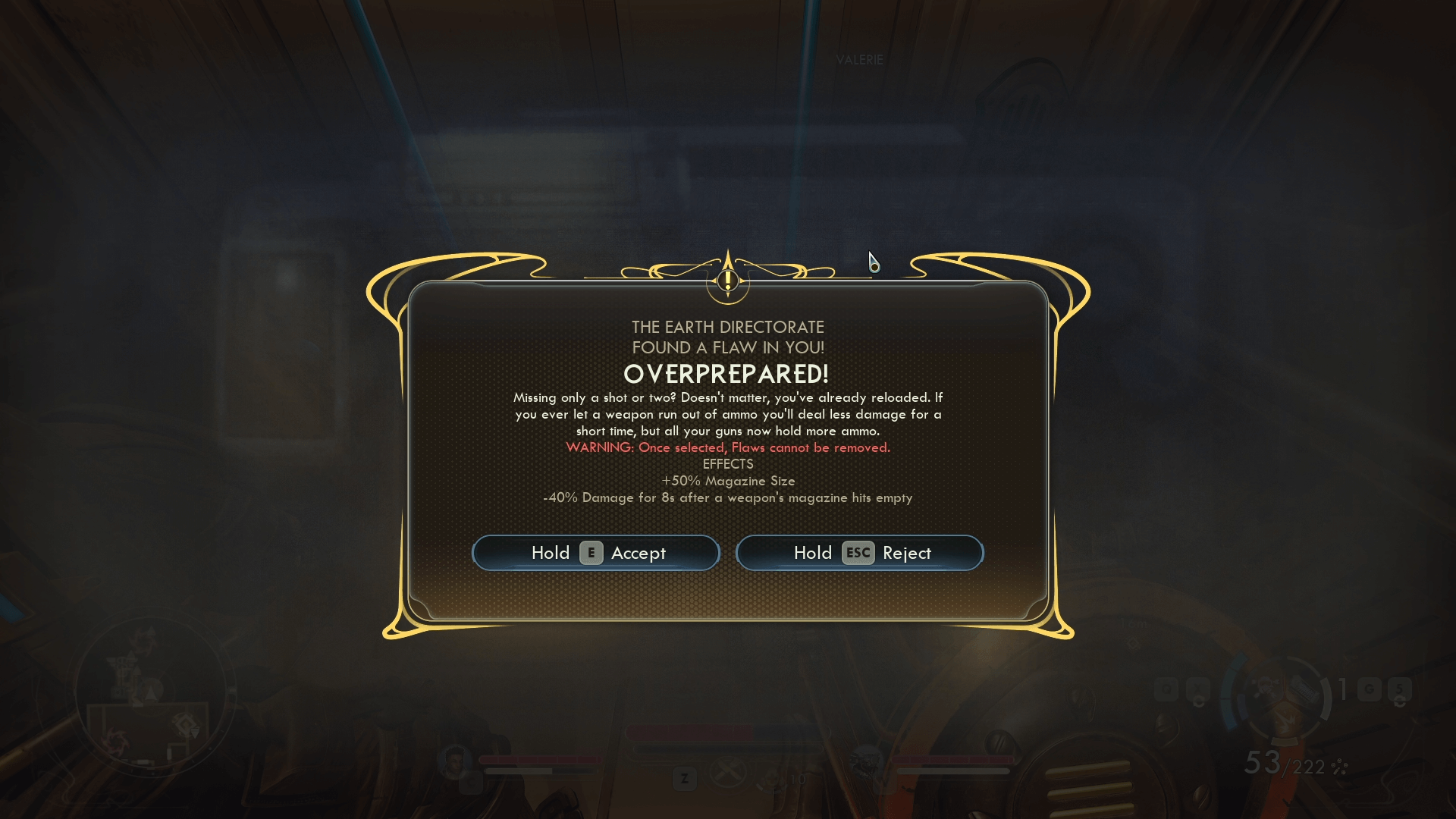
A word of warning if you play: be careful which flaws you accept. Some can make the game significantly harder. The game even advises you to reject them on your first playthrough. If I had accepted Kleptomaniac, I would have automatically stolen items, ruining my reputation in settlements. Early on, I was playing stealthily, which meant I was crouching constantly. The game identified a “Bad Knees” flaw. Accepting it would have made me faster while crouched, but my aching knees would have made noise, undermining my stealth build. There are many flaws like this, and I think the system is excellent. It’s a dynamic way to shape your character through actions rather than just menus.
The Story: A Whole Lot of Nothing
The Outer Worlds 2’s story is not directly connected to the first game. It’s set in the same universe, but you don’t need to have played the original. You start as an agent for an organization called the Earth Directorate, tasked with investigating a universal threat. On your very first mission in the Arcadia system, you’re betrayed and lose your team. After a 10-year cryogenic sleep, you set out to uncover the betrayal and save the universe.

The story structure is one giant cliché. You have a single goal: save the universe. But the narrative’s formula consists of constantly throwing roadblocks in your way. You need to get somewhere, but someone is blocking the path. “Do these two quests for me, and I’ll let you pass,” they say. A huge portion of the game is made up of these gatekeeper fetch quests. I swear, if I have to do two more tasks for a guard just to open a door in an RPG, I’m going to be sick. It’s a tired trope, and it’s everywhere in this game.
Setting aside the main story, a game like this should shine in its side quests. While there were a few interesting ones, they weren’t enough to save the experience. In one mission, you mediate between striking factory workers and the owner. You try to find a middle ground, advocating for workers putting in 20-hour shifts while ensuring the company can accept the terms.
I do appreciate Obsidian’s sense of humor. The witty remarks in serious moments, the jabs at the entire gaming industry—especially The Outer Worlds 2’s announcement trailer—are great. But I’m not going to endure dozens of hours of this gameplay just for a few clever lines of dialogue.
The Game Itself Is a Flaw
The moment you touch water, you die instantly. Okay, I’m not asking for full swimming mechanics, but this isn’t the way to do it. At least let us drown after a few seconds like in Helldivers 2. Here, you accidentally touch a puddle, and poof, you’re dead.
In general, you die in absurd ways throughout the game. You jump from a place that isn’t even that high, and poof, dead. Yet I’ve survived jumps from the same height elsewhere.
A large part of the gameplay is just running across empty maps to your next objective. Thankfully, stamina is unlimited and the sprint speed is decent. I just sprinted and jumped everywhere; otherwise, it would have been unbearable.
The third-person mode feels like it was included just to check a box. It’s awful. I may have never seen a worse TPS mode. I strongly recommend playing in first-person. The camera angle, the animations, the aiming system—it’s all terrible. It feels like they remembered to add it at the last minute.

The visual quality isn’t impressive either. I’m not a fan of the art style Obsidian uses for this series. In some areas, it looks like random colors were thrown at a canvas, making it a real eyesore. Of course, that’s a matter of taste. But even so, the system requirements are too high for these graphics. I played on a laptop with an AMD Ryzen 5 7640HS and an RTX 4060. On max settings with DLSS and Frame Generation, it ran fine initially. However, I encountered significant optimization issues in the later stages of the game, where it simply wasn’t utilizing my system’s resources properly.
The music was largely unremarkable, though I did enjoy the tracks during the final mission.
On a positive note, the game does offer multiple ways to accomplish tasks, allowing for different interactions based on your character skills.
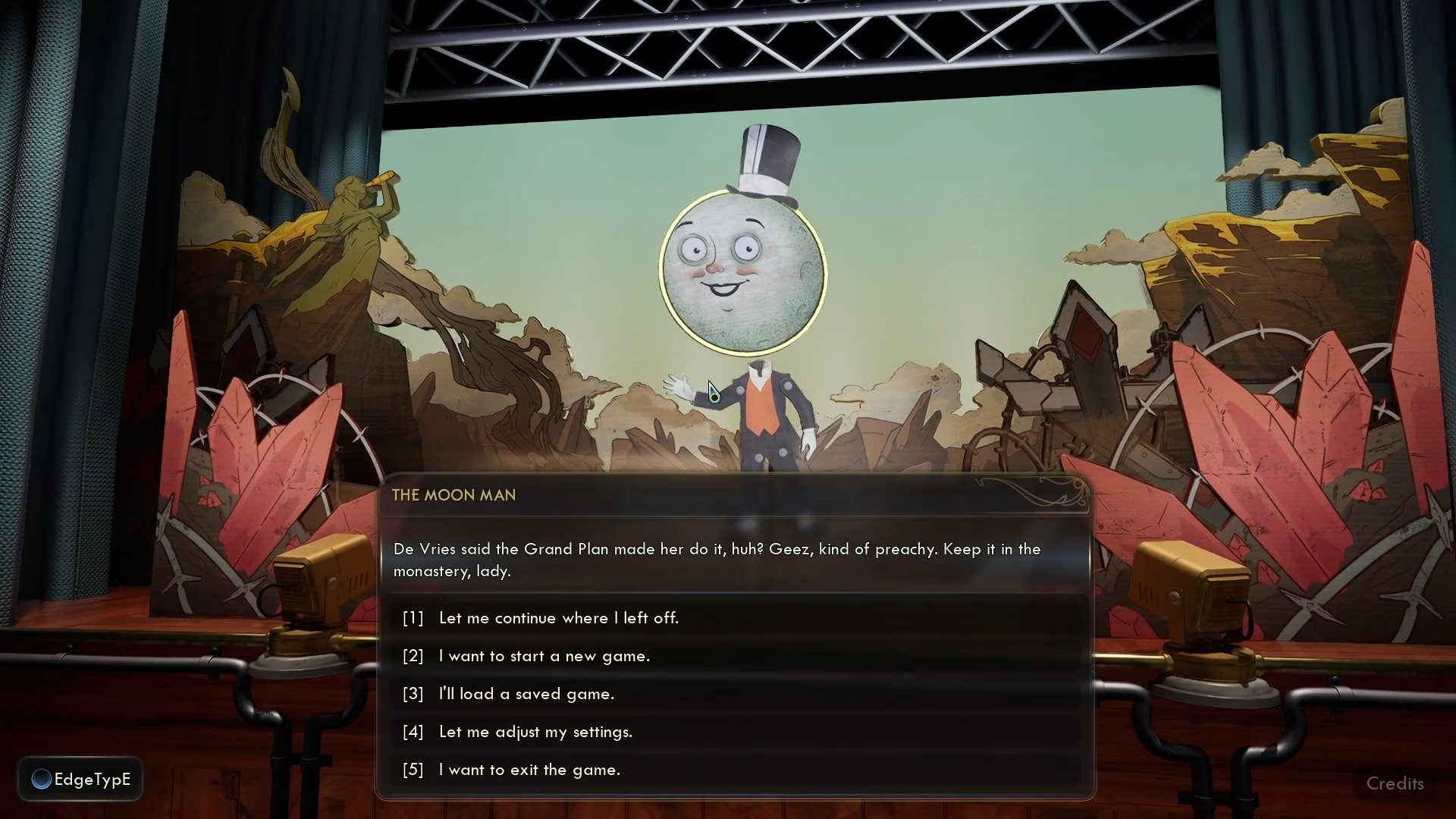
The main menu is a nice touch. The “Moon Man” character comments on your actions in the game. For example, I started on the easiest difficulty, and he said, “Our writers appreciate you choosing story mode to prioritize dialogue over action.” His commentary changes based on where you last left off.
To Play, or Not to Play?
If I had paid full price for this game, I probably would have cried. I played it during the last days of my Game Pass subscription. It took me 20 hours to finish, but you could probably rush through the main story in about 10-11 hours. Considering this is a full-priced title, neither the content nor the quality justifies the cost. If you’re a fan of old-school RPGs, its nostalgic quality might appeal to you. But even then, I’d strongly recommend waiting for a deep sale.
When a 10-year-old Bethesda game is technically superior to your new release, it’s time to take a long, hard look in the mirror.

